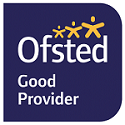At Charnock Hall Primary Academy, we use a wide range of initiatives to support with our English curriculum.
Power of Reading
The Power of Reading is a school development project, which engages teachers and pupils in the Literacy curriculum, through using high quality books and proven teaching approaches. The Power of Reading project combines the use of outstanding books for teachers and pupils with an approach to English curriculum teaching that is creative, engaging and develops a love for literacy.
Please refer to the link below, for further information about the Power of Reading Project:
Active English
Active English is a whole-school support for teaching grammar, writing and punctuation. It is largely aimed at years 1 to 4, but its elements can be used flexibly across all year groups to meet the needs of pupils. What is important, is that there is a whole-school approach, where all teachers and teaching assistants are supported, so that the programme can be implemented school-wide, in a consistent manner. It uses the principles of mnemonics to embed learning in an active and engaging way, which provides pupils with a deeper grasp of language that serves as a foundation for their future.
Handwriting
In Key Stage One, pupils are taught to use leading strokes in their writing (pre-cursive). This skill naturally leads to a joining of handwriting, when they are ready. In Key Stage Two, pupils are taught to join their writing cursively. When pupils show a consistent style in their handwriting, they visit Mr Burgess with their books. Mr Burgess will provide the children with targets to work on and the children have to revisit him, if there is any particular area that needs developing in their handwriting. When pupils are successful, they are given a certificate and a pen in the ‘Learner of the Week’ assembly.
How to achieve your Pen Licence!
1. Ensure you writing is always neat and joined correctly.
2. Ensure your writing sits clearly on the line.
3. Ensure your ascenders and descenders are the correct size.
4. Ensure your letters are a consistently evenly sized.
5. Ensure you have used capital letters correctly.
6. Ensure the spaces between your letters are evenly spaced (not too squashed or stretched).
7. Ensure spaces between words are the right size (not too big or small).
8. Ensure that you are able to demonstrate this standard of writing, in a consistent manner, across ALL curriculum work.
Phonics
Phonics is a way of teaching pupils to read and write quickly and skilfully. They are taught how to recognise the sounds that each individual letter makes; identify the phonemes (sounds) that different combinations of letters make – such as ‘sh’ or ‘oo’ and blend these sounds together from left to right to make a word. Pupils can then use this knowledge to ‘de-code’ new words that they hear or see. This is the first important step in learning to read. Pupils also learn to represent sounds using the correct graphemes (letters or combination of letters) and write these down to encode speech into the written word.
The Department for Education’s guide for parents, Learning To Read Through Phonics, includes information about the Phonics Screening Test that every child has to take in Year One.
At CHPA we use an approach called Monster Phonics. Please take a look on our phonics page or follow the link www.monsterphonics.com for more information.
Reading Books
All pupils have access to books in school to take home and read regularly and this includes a weekly trip to the school’s library. Teachers and teaching assistants are responsible for making sure that pupils are choosing books of the right level (known in school as Book Bands), but where possible pupils should select their own books. Book banded shelves are in the Reception area, in the corridors of Year 1 and 2, and in the junior library on the Key Stage 2 corridor. School constantly strives to keep an updated selection of reading scheme books along-side other books of similar levels available for pupils to choose.
Pupils who have reached the end of the book banded levels are described as “free readers” but still need guidance to choose age-appropriate books that provide sufficient challenge.
Reading books are provided for reading at home and will be changed weekly. This is to support with building fluency when reading as children will build confidence sight reading words they are familiar with. Reading in school is done in a variety of other ways, such as one to one reading, Book Study and English lessons.
Reading
Every day pupils read with the teacher. This lesson equips pupils with the skills to read with fluency, make predictions, visualise the text and to expand their vocabulary. Additional individual reading is implemented when necessary.
Record Keeping and Assessment
Every half-term, pupils on book bands are assessed to check that they are making suitable progress. A note of this is made in the Pupil Learning Dairies for parents to see. Teachers also use reading assessments to check whether pupils are meeting age related expectations.
Teachers continuously assess pupils reading development and submit half-termly updates to the Headteacher, for every pupil. This information to support these assessments, is collected by teachers during Book Study and individual reading sessions. It is also supported by the book banding process and more formal tests, as appropriate. It is used to ensure that pupils are making expected progress or reaching targeted outcomes. Parents are informed of outcomes through the yearly reports and parent consultation events.
Reading at Home
There is a strong evidence to prove that reading at home has a positive impact on achievement. However, this continues way beyond primary school. Pupils who read for enjoyment from an early age are more successful in GCSEs and A levels! There is a school expectation that home reading is completed a minimum of 4 times per week by all pupils, with records updated within Reading diaries.
Pupil Learning Diaries
All pupils have been given a Learning Diary. It has been designed to help families support pupil’s learning at home, keeping you informed about the reading pupils do in school. When it’s not being used, please remind your child to keep their diary in their book folder, or school bag, so it is always available. It will be filled in by pupils when they read independently and by every adult who hears the child read.
Teachers will regularly check the diary to ensure that pupils are consistently reading at home and are choosing appropriate books.
Creating a love of Reading – Outdoor spaces and Library


